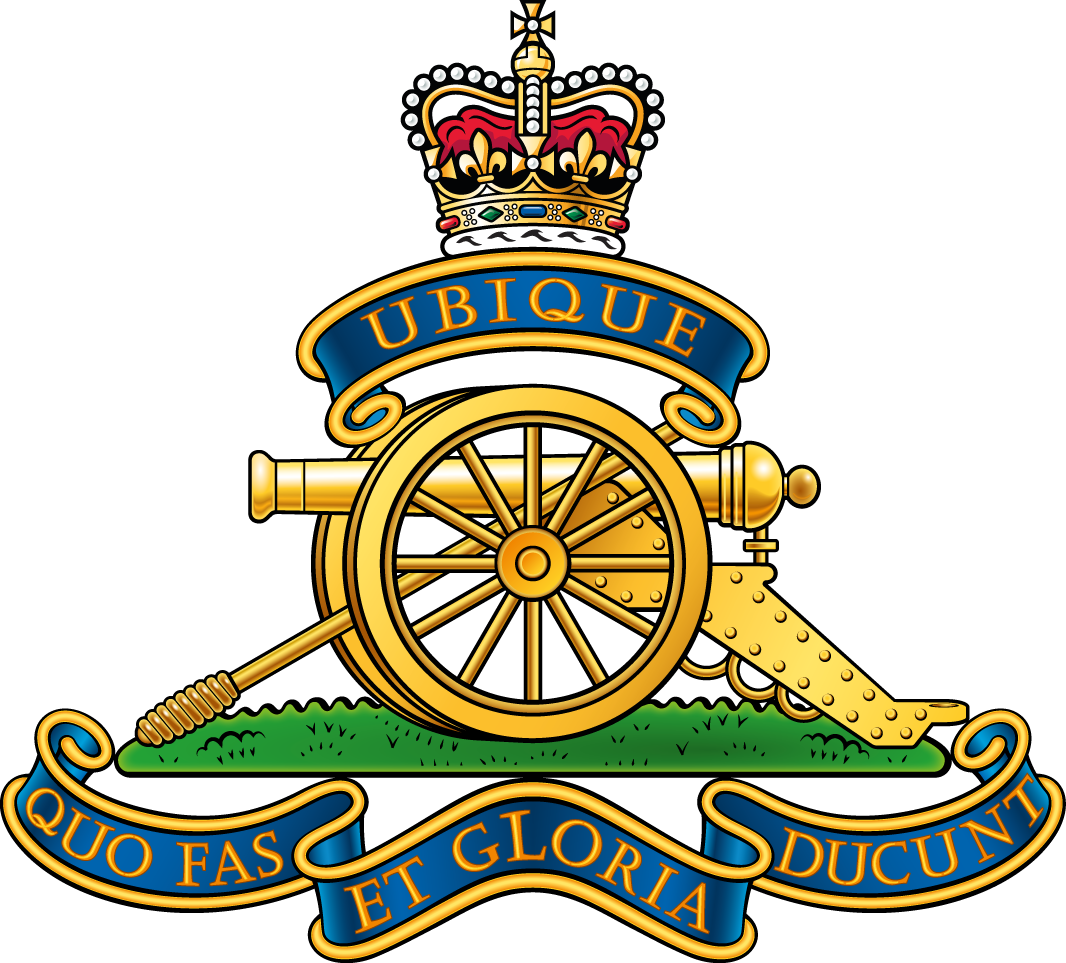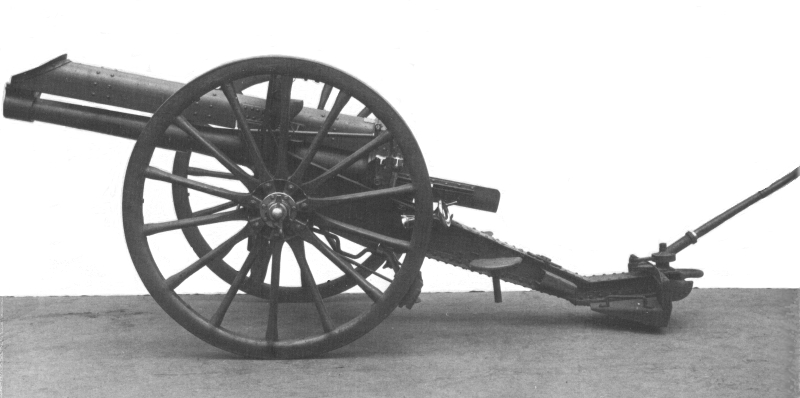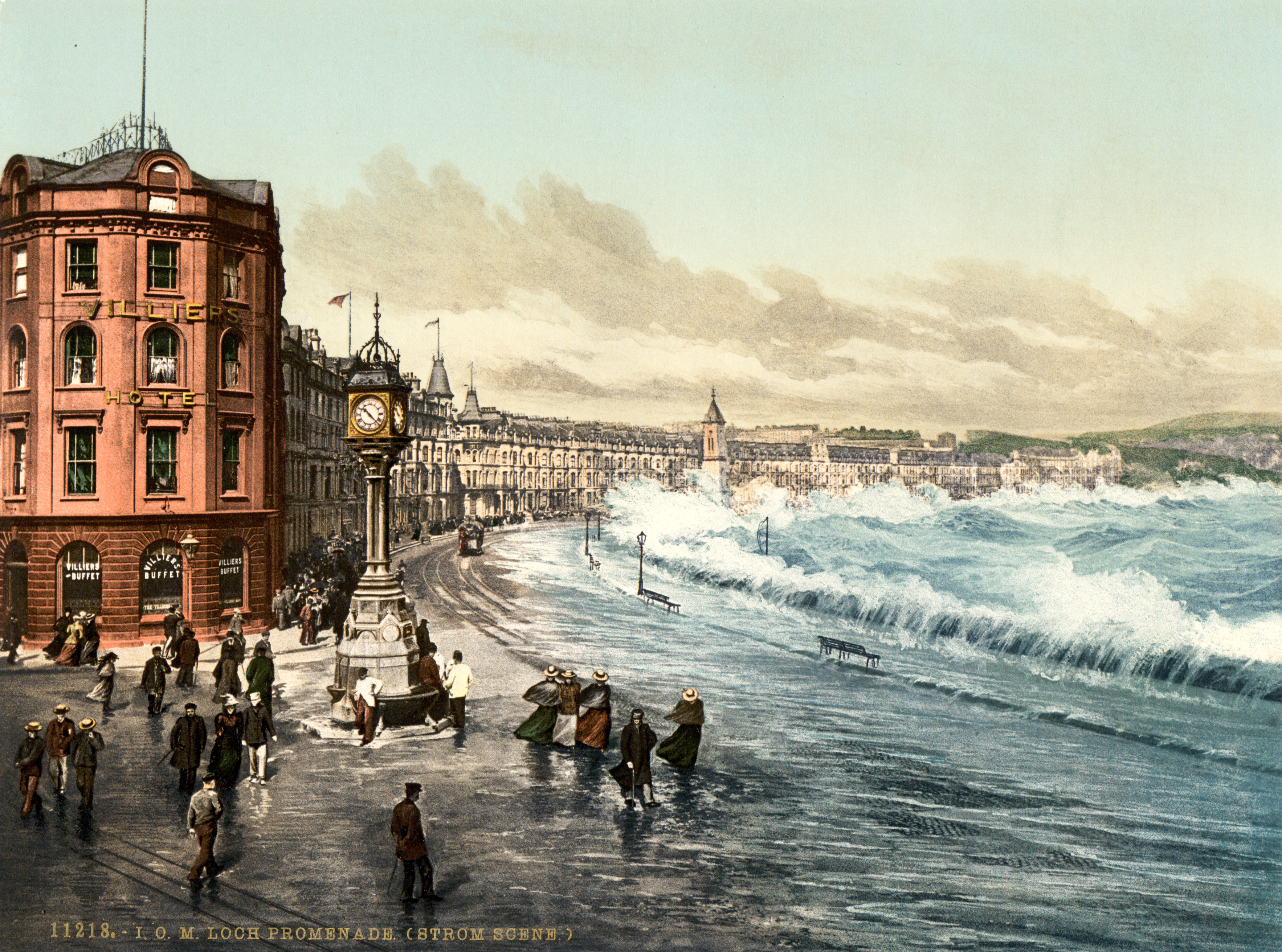|
103rd (Lancashire Artillery Volunteers) Regiment Royal Artillery
103rd (Lancashire Artillery Volunteers) Regiment Royal Artillery is part of the Army Reserve and primarily has sub-units throughout the Greater Manchester and Merseyside area of the North-West of England, in recent years it has extended its footprint to Wolverhampton, Isle of Man, Carlisle and Nottingham. Its purpose is to provide reinforcements for units that use the 105 mm L118 Light Gun. Formation The Lancashire Artillery Volunteers were first raised in 1859 as part of the Volunteer Force raised in response to threats of French Invasion. A total of 23 Artillery companies were raised initially. However, in Manchester, numerous units that would later form the Lancashire Artillery Gunners had existed from as early as 1804, when the Duke of Gloucester inspected the Heaton Artillery Volunteers before they were shipped off to the fronts of the Napoleonic Wars. 20th Century History Officers and men of the Lancashire Artillery Volunteers continued to give service during the ... [...More Info...] [...Related Items...] OR: [Wikipedia] [Google] [Baidu] |
Royal Artillery
The Royal Regiment of Artillery, commonly referred to as the Royal Artillery (RA) and colloquially known as "The Gunners", is one of two regiments that make up the artillery arm of the British Army. The Royal Regiment of Artillery comprises thirteen Regular Army regiments, King's Troop, Royal Horse Artillery, the King's Troop Royal Horse Artillery and five Army Reserve (United Kingdom), Army Reserve regiments. History Formation to 1799 Artillery was used by the English army as early as the Battle of Crécy in 1346, while Henry VIII established it as a semi-permanent function in the 16th century. Until the early 18th century, the majority of British regiments were raised for specific campaigns and disbanded on completion. An exception were gunners based at the Tower of London, Portsmouth and other forts around Britain, who were controlled by the Ordnance Office and stored and maintained equipment and provided personnel for field artillery Artillery is a class of heav ... [...More Info...] [...Related Items...] OR: [Wikipedia] [Google] [Baidu] |
Bolton
Bolton (, locally ) is a large town in Greater Manchester in North West England, formerly a part of Lancashire. A former mill town, Bolton has been a production centre for textiles since Flemish weavers settled in the area in the 14th century, introducing a wool and cotton-weaving tradition. The urbanisation and development of the town largely coincided with the introduction of textile manufacture during the Industrial Revolution. Bolton was a 19th-century boomtown and, at its zenith in 1929, its 216 cotton mills and 26 bleaching and dyeing works made it one of the largest and most productive centres of cotton spinning in the world. The British cotton industry declined sharply after the First World War and, by the 1980s, cotton manufacture had virtually ceased in Bolton. Close to the West Pennine Moors, Bolton is north-west of Manchester and lies between Manchester, Darwen, Blackburn, Chorley, Bury and Salford. It is surrounded by several neighbourin ... [...More Info...] [...Related Items...] OR: [Wikipedia] [Google] [Baidu] |
Freedom Of The City
The Freedom of the City (or Borough in some parts of the UK) is an honour bestowed by a municipality upon a valued member of the community, or upon a visiting celebrity or dignitary. Arising from the medieval practice of granting respected citizens freedom from serfdom, the tradition still lives on in countries such as the United States, United Kingdom, Ireland, Australia, Canada, South Africa and New Zealand—although today the title of "freeman" confers no special privileges. The Freedom of the City can also be granted by municipal authorities to military units which have earned the city's trust; in this context, it is sometimes called the Freedom of Entry. This allows them the freedom to parade through the city, and is an affirmation of the bond between the regiment and the citizenry. The honour was sometimes accompanied by a "freedom box", a small gold box inscribed to record the occasion; these are not usual today. In some countries, such as the United States, esteeme ... [...More Info...] [...Related Items...] OR: [Wikipedia] [Google] [Baidu] |
105mm Light Gun
The L118 light gun is a 105 mm towed howitzer. It was originally designed and produced in England for the British Army in the 1970s. It has since been widely exported. The L119 and the United States Army's M119 are variants that use a different type of ammunition. History Development From 1961 to 1975, the British Army had the widely used 105 mm OTO Melara Mod 56, which it called the "L5 pack howitzer", with L10 ordnance as its light artillery weapon, replacing the 75 mm howitzer, 4.2 inch mortar and 25-pounder gun in eight regular artillery regiments. It fires the US M1 type ammunition (called "105 mm How" in the UK). The Mod 56 was originally designed in Italy for its mountain artillery units. It was light enough to be lifted by Westland Wessex helicopters or towed by Land Rovers. It could also be dismantled, with no piece heavier than 128 kg, to be transported by mules or horses. It lacked range (making it potentially vulnerable to counter-battery fire), was ... [...More Info...] [...Related Items...] OR: [Wikipedia] [Google] [Baidu] |
Bulwell
Bulwell is a market town in the City of Nottingham, in Nottinghamshire, England. It is south-west of Hucknall and to the north-west of Nottingham. The United Kingdom Census 2011 recorded the population of Bulwell at 29,771 which amounted to over 10 per cent of Nottingham city's population. The 2011 census gave a population of 16,157 for the Bulwell ward of Nottingham City Council. There is an adjacent ward, Bulwell Forest, which includes Highbury Vale, Rise Park and the west of Top Valley), its population at the same census being 13,614. History Early settlers The earliest documented settlements in Bulwell appeared around 800 AD, and were most likely built around the same time as the first local bridge across the River Leen. The river was significantly narrower, shallower and slower-moving in Bulwell than in other potential locations along its length, and the threat of highwaymen was a danger on existing cross-country routes; thus a toll bridge was constructed at Bulwell, t ... [...More Info...] [...Related Items...] OR: [Wikipedia] [Google] [Baidu] |
South Nottinghamshire Hussars
The South Nottinghamshire Hussars is a unit of the British Army formed as volunteer cavalry in 1794. Converted to artillery in 1922, it presently forms part of 103 (Lancashire Artillery Volunteers) Regiment, Royal Artillery. History Formation and early history The regiment was formed as the Nottinghamshire (South Nottinghamshire) Yeomanry Cavalry in 1794 as part of the response to the French Revolutionary Wars. It became the Southern Nottinghamshire Regiment of Yeomanry Cavalry in 1826. Second Boer War The Yeomanry was not intended to serve overseas, but due to the string of defeats during Black Week in December 1899, the British government realized they were going to need more troops than just the regular army. A Royal Warrant was issued on 24 December 1899 to allow volunteer forces to serve in the Second Boer War. The Royal Warrant asked standing Yeomanry regiments to provide service companies of approximately 115 men each for the Imperial Yeomanry, equipped as Mounted infa ... [...More Info...] [...Related Items...] OR: [Wikipedia] [Google] [Baidu] |
210 (Staffordshire) Battery Royal Artillery
Year 210 ( CCX) was a common year starting on Monday (link will display the full calendar) of the Julian calendar. At the time, it was known as the Year of the Consulship of Faustinus and Rufinus (or, less frequently, year 963 ''Ab urbe condita''). The denomination 210 for this year has been used since the early medieval period, when the Anno Domini calendar era became the prevalent method in Europe for naming years. Events By place Roman Empire * Having suffered heavy losses since invading Scotland in 208, Emperor Septimius Severus sends his son - Caracalla - to systematically wipe out and torture the Scots into submission. Births * May 10 – Claudius II, Roman emperor (d. 270) * Dexippus, Greek historian and general (d. 273) * Egnatius Lucillianus, Roman governor (d. 244) * Ruan Ji, Chinese musician and poet (d. 263) Deaths * Cao Chun, Chinese general and adviser (b. 170) * Liu Hong, Chinese astronomer and politician (b. 129) * Sextus Empiricus, Gr ... [...More Info...] [...Related Items...] OR: [Wikipedia] [Google] [Baidu] |
209 (Manchester Artillery) Battery Royal Artillery
The Manchester Artillery is a Volunteer unit of the British Army first raised in the City of Manchester in 1860, whose successors continue to serve in the Army Reserve today. It became a brigade of the Royal Field Artillery in the Territorial Force in 1908, and in World War I it served in Egypt in 1915–17 before being broken up. Its second line unit went to the Western Front in 1917, seeing action at Ypres, against the German Spring Offensive, and leading the pursuit in the Allies' victorious Hundred Days Offensive. Just before World War II the Manchester Artillery again formed a duplicate. While the parent regiment served in the Battle of France including the Dunkirk evacuation, and later in the Middle East and the Italian campaign, its duplicate fought in Normandy and North West Europe. Both regiments were reformed postwar, but after a number of amalgamations they and several other Manchester-based units were reduced into 209 (Manchester Artillery) Battery in the p ... [...More Info...] [...Related Items...] OR: [Wikipedia] [Google] [Baidu] |
Isle Of Man
) , anthem = " O Land of Our Birth" , image = Isle of Man by Sentinel-2.jpg , image_map = Europe-Isle_of_Man.svg , mapsize = , map_alt = Location of the Isle of Man in Europe , map_caption = Location of the Isle of Man (green) in Europe (dark grey) , subdivision_type = Sovereign state , subdivision_name = United Kingdom , established_title = Norse control , established_date = 9th century , established_title2 = Scottish control , established_date2 = 2 July 1266 , established_title3 = English control , established_date3 = 1399 , established_title4 = Revested into British Crown , established_date4 = 10 May 1765 , official_languages = , capital = Douglas , coordinates = , demonym = Manx; Manxman (plural, Manxmen); Manxwoman (plural, Manxwomen) , ethnic_groups = , ethnic_groups_year = 2021 , ethnic_groups_ref = Official census statistics provided by Statistics Isle of Man, Isle of Man Government: * * , religion = , religion_year = 2021 , religi ... [...More Info...] [...Related Items...] OR: [Wikipedia] [Google] [Baidu] |
Douglas, Isle Of Man
Douglas ( gv, Doolish, ) is the capital and largest town of the Isle of Man, with a population of 26,677 (2021). It is located at the mouth of the River Douglas, and on a sweeping bay of . The River Douglas forms part of the town's harbour and main commercial port. Douglas was a small settlement until it grew rapidly as a result of links with the English port of Liverpool in the 18th century. Further population growth came in the following century, resulting during the 1860s in a staged transfer of the High Courts, the Lieutenant Governor's residence, and finally the seat of the legislature, Tynwald, to Douglas from the ancient capital, Castletown. The town is the Island's main hub for business, finance, legal services, shipping, transport, shopping, and entertainment. The annual Isle of Man TT motorcycle races start and finish in Douglas. History Early history In the absence of any archaeological data, the origins of the town may be revealed by analysis of the origin ... [...More Info...] [...Related Items...] OR: [Wikipedia] [Google] [Baidu] |
208 (3rd West Lancashire) Battery Royal Artillery
Year 208 ( CCVIII) was a leap year starting on Friday (link will display the full calendar) of the Julian calendar. At the time, it was known as the Year of the Consulship of Aurelius and Geta (or, less frequently, year 961 ''Ab urbe condita''). The denomination 208 for this year has been used since the early medieval period, when the Anno Domini calendar era became the prevalent method in Europe for naming years. Events By place China * Spring – Battle of Jiangxia: Sun Quan defeats Huang Zu. * October ** Warlord Cao Cao marches south with his army, and captures the enemy fleet at Jiangling. ** Battle of Changban: Warlord Liu Bei escapes from Cao Cao. * December 10 – Cao Cao writes ''Duǎn Ge Xíng''. * Winter – Zhou Yu and Liu Bei defeat Cao Cao at the Battle of Red Cliffs; along with the Battle of Yamen and Battle of Lake Poyang. This is one of the largest naval battles in China's history. Parthia * King Vologases VI succeeds his father Vo ... [...More Info...] [...Related Items...] OR: [Wikipedia] [Google] [Baidu] |
106th (Yeomanry) Regiment Royal Artillery
106 (Yeomanry) Regiment Royal Artillery is part of the Army Reserve and has sub-units throughout the South of England. The Regiment's role is Close Air Defence and it was part of the Joint Ground Based Air Defence (Jt GBAD) formation, later 7 Air Defence Group and uses the Starstreak missile. Two Batteries will be armoured and will operate in support of maneuver forces whilst one Battery will be equipped with the lightweight LML version. The Regiment is paired with 12 Regiment Royal Artillery for training, exercise and operations. History The regiment was formed in 1999 as 106 (Yeomanry) Regiment Royal Artillery (Volunteers). Its units were 202 (Suffolk and Norfolk Yeomanry) Battery at Bury St Edmunds (transferred from 100th (Yeomanry) Regiment Royal Artillery), 265 (Home Counties) Battery at Grove Park in London (also transferred from 100 (Yeomanry) Regiment Royal Artillery), 269 (West Riding) Battery at Leeds and 457 (Hampshire Yeomanry) Battery at Southampton. 202 Batter ... [...More Info...] [...Related Items...] OR: [Wikipedia] [Google] [Baidu] |






